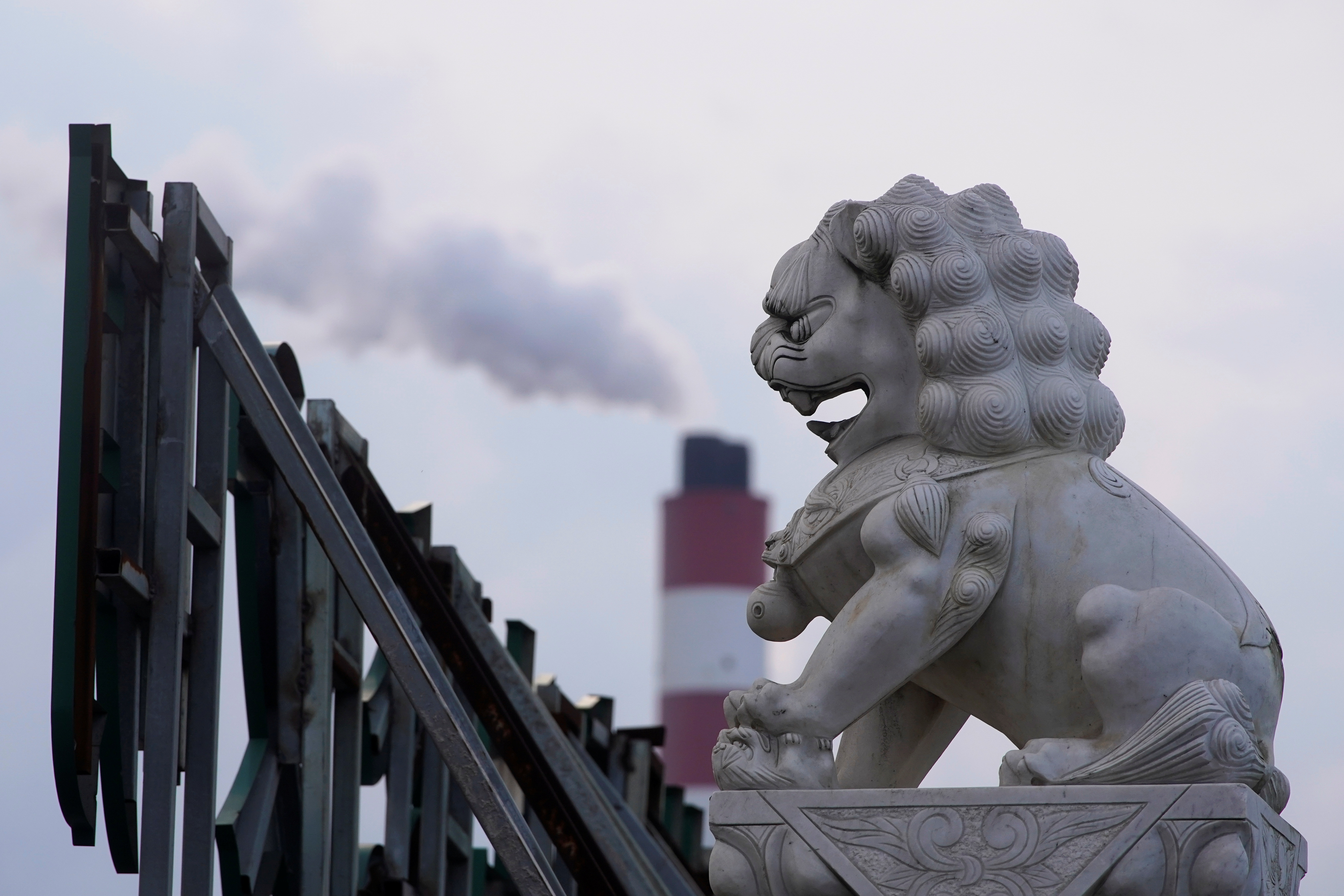
A chimney of a coal-fired power plant stands behind a lion statue in Shanghai, China October 21, 2021. REUTERS/Aly Song/File Photo Acquire Licensing Rights
SINGAPORE, Nov 14 (Reuters) – China’s pledge to end overseas coal financing has not yet driven more funding into renewable projects, with its development banks providing no new energy sector loans for the second year in a row in 2022, researchers at Boston University said on Tuesday.
President Xi Jinping said in 2021 that China would stop providing financial support for overseas coal and fund more green and low-carbon energy projects in developing countries.
But while new fossil fuel lending has ended, China’s development banks also recorded zero new energy sector loan commitments in 2021 and 2022, Boston University’s Global Development Policy Center (GDP Center) said.
“China’s support for overseas coal projects was already on the decline before Xi’s 2021 pledge,” said Cecilia Springer, Non-Resident Fellow at the GDP Center and lead author of the report.
“However, the other half of the pledge – to step up support for green and low-carbon energy – has yet to solidify.”
From 2000 to 2022, the China Development Bank (CDB) and the Export-Import Bank of China (CHEXIM) provided a total of 331 loans worth $225 billion for energy projects, with the largest share going to exploration and extraction activities. Nearly three quarters of the total lending went to coal, oil and gas.
Though financing from the two banks has declined since 2016, it still “surpasses the energy lending offered to public entities by any other global lender,” including the World Bank, the GDP Center report said.
At the Belt and Road summit last month, China launched a new Green Investment and Finance Partnership (GIFP) to promote green energy. President Xi said around $100 billion in annual financing would be made available to support the energy transition in Belt and Road countries.
Springer said the new financing was only a “drop in the bucket” when it came to meeting the goals of the Paris Agreement, but added it was “significant that China has committed to bring financial resources back to the table after several years of lowered development finance levels”.
The GDP Center’s database shows China’s fossil fuel lending commitments since 2013 – when the Belt and Road project was first announced – have amounted to $55.4 billion, $20 billion of which was for coal-fired power generation.
Reporting by David Stanway; Editing by Lincoln Feast.
Our Standards: The Thomson Reuters Trust Principles.